Planning & Prep
Recipe Converter Calculator: How To Scale Your Recipes
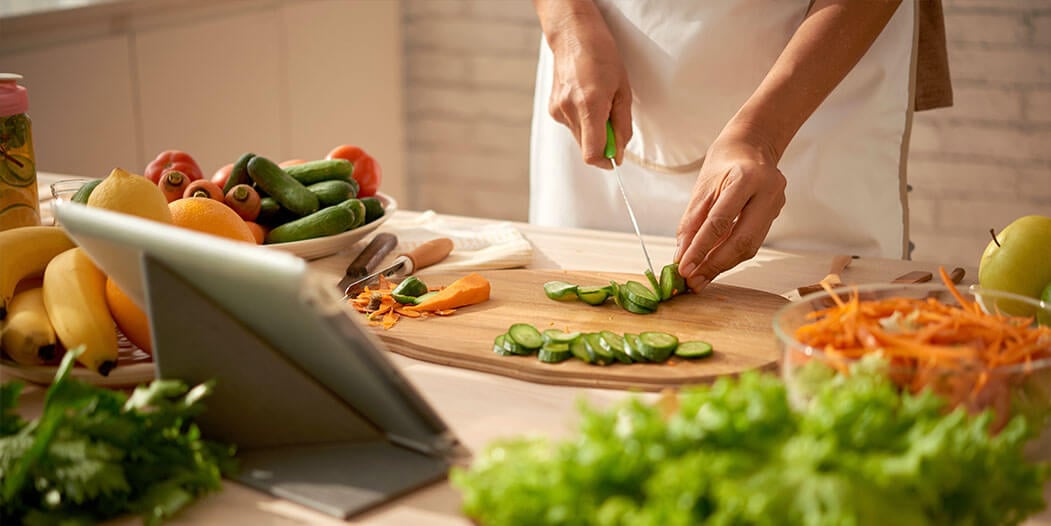
Found a great recipe but the portions are way too large? While leftovers are never a bad thing (cold pizza for breakfast, anyone?), we understand if you want to scale down your recipe.
Our recipe converter calculator cuts out the manual work for faster measurements without the hassle. We also include a common measurement conversion chart to help you adjust your proportions properly.
Recipe Converter
Ingredients of original recipe
QTY
Metric
INGREDIENT
Enter your ingredients to see the results
How to scale a recipe
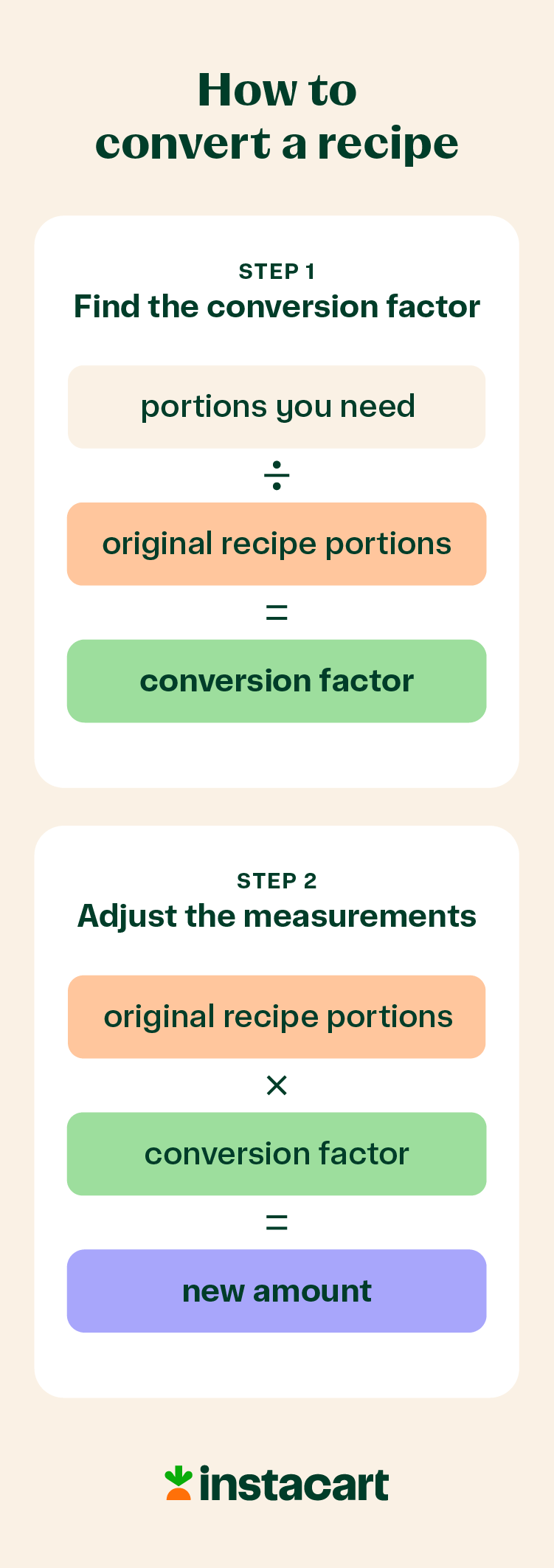
While using a recipe converter is the easiest way to scale a recipe, you can also do the work manually. Follow these steps if you’re unsure how to scale a recipe.
1. Determine the portion size
When it comes to scaling a recipe up or down, you first need to determine your portion size. Perhaps you want to triple the recipe for an upcoming breakfast potluck, or maybe you want to cook dinner for two instead of six.
2. Adjust the measurements
Once you have your portion size, you can find your exact measurements. Your new portion size will be the yield, which you will then use to adjust the ingredient amounts you’ll need.
To determine how much to adjust the ingredient quantities, calculate the conversion factor by dividing the desired serving size by the original serving size.
| Portions you need ÷ original recipe portions = conversion factor |
For example, if a recipe results in four servings but you only need two servings, divide by two to get your conversion factor.
| Original recipe portions x conversion factor = new amount |
For example, if a recipe needs 4 tablespoons of flour and the conversion factor is 2, then the scaled recipe measurements would be 4 x 2 = 8 tablespoons of flour.
3. Adjust measurements and units
If a recipe calls for grams to cups or perhaps oil instead of butter, you’ll need to convert the measurements as needed.
Make sure to convert measurements between volume (cups, tablespoons, teaspoons), weight (ounces, grams) and any other units to their new quantity.
For example, what if your recipe calls for 4 ounces of chicken but you need to quadruple the quantities? Your new amount would be 16 ounces (4 x 4), but because there are 16 ounces in 1 pound, you can convert the final units to 1 pound instead of 16 ounces.
Common measurement conversions
Need to convert something in a pinch? Use the chart below for common measurement conversions. Use our ingredient weight chart for more extensive conversions to ensure a more precise measurement.
| Common measurement conversions | |
| Measurement | Equivalent |
| 1 tablespoon | 3 teaspoons |
| 1 fluid ounce | 2 tablespoons |
| 1 cup | 8 fluid ounces |
| 1 pint | 2 cups |
| 1 quart | 2 pints |
| 1 gallon | 4 quarts |
| 1 pound | 16 ounces |
Things to consider when scaling a recipe

Aside from using a recipe converter, there are several factors to consider when scaling a recipe:
- Ingredient proportions: Look closely at the original recipe’s proportions — some ingredients may need to be adjusted differently when scaling a recipe.
- Cooking time and temperature: Aside from adjusting the ingredient proportions, you’ll need to increase or decrease the cooking time. This is especially important for baked goods and dishes cooked over specific intervals. You can also use a cooking time calculator to ensure your meat is cooked to perfection.
- Cookware size: Whether you’re scaling a recipe up or down, you’ll need to make sure your cookware is the appropriate size. Larger quantities may need bigger pots, pans or baking dishes to prevent overcrowding and uneven cooking.
- Consistency and texture: Keep in mind the impact of scaling a recipe on your dish’s consistency and texture. When you scale up or down, certain dry and liquid ingredients may affect the texture differently. You may need to make additional adjustments to achieve your desired consistency.
- Taste and seasoning: Similar to consistency and texture, when you scale a recipe, you’ll also want to adjust the seasonings accordingly. Certain dishes may need more seasoning than others to achieve the same level of flavor as the original recipe.
- Ingredient availability: Keep in mind seasonality and availability when scaling a recipe. If certain ingredients aren’t readily available in larger quantities, you may need to find suitable substitutions.
Additional cooking calculator
Cooking can be tough, even for the most seasoned cooks. Don’t sweat it — check out these additional cooking calculators to help you make the best dish possible.
- Grams to mL converter
- Turkey cooking time calculator
- Ham cooking time calculator
- Serving size calculator
- Leftover recipe generator
- Grocery budget calculator
A pinch of precision
There are many factors to consider when scaling a recipe up or down — think about your desired portion size and the original portion size. With these numbers, you can find your conversion factor to adjust your recipe. While you can do the work manually, you can also rely on our recipe converter calculator to reduce prep time.
In a pinch for time? Lean on Instacart for all your grocery needs. Missing a key ingredient to thicken mashed potatoes? Or perhaps your kids aren’t a fan of spice and you need to find cayenne pepper substitutes. Shop all your ingredients in one place and receive your order right to your door.
Most Recent in Planning & Prep
![How To Send Food to Someone in Another State [Guide]](https://www.instacart.com/company/wp-content/uploads/2025/02/how-to-send-food-to-someone-in-another-state-hero-447x224.jpg)
Planning & Prep
How To Send Food to Someone in Another State [Guide]
Sending food is an act of love, a delicious way to say "I'm thinking of you" across the miles, whether it's for a birthday, holiday or just because. And it's easier than you might think!…
Feb 27, 2025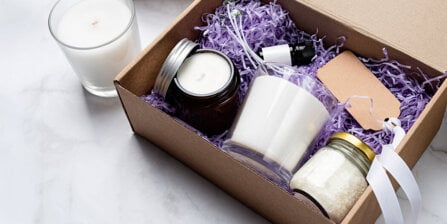
Planning & Prep
37 Care Package Ideas: From “Get Well” to “Just Because”
It’s always nice to show some extra appreciation for your loved ones. Whether you want to support a sick friend or a neighbor who had their first child, a care package is the perfect way…
Jan 30, 2025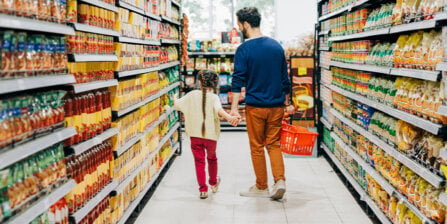
Planning & Prep
Average Grocery Cost per Month: The 2025 Breakdown
The average grocery cost per month, per person, in the United States is roughly $350 for adults between 19 and 50 years old in a four-person household. This estimation depends on multiple factors, such as…
Dec 23, 2024


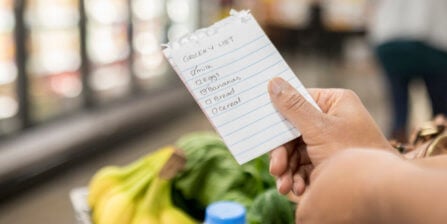 17 Grocery List Categories to Make Shopping Easy
17 Grocery List Categories to Make Shopping Easy 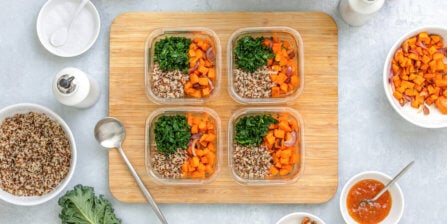 How to Meal Plan: Step-by-Step Guide to Meal Planning
How to Meal Plan: Step-by-Step Guide to Meal Planning 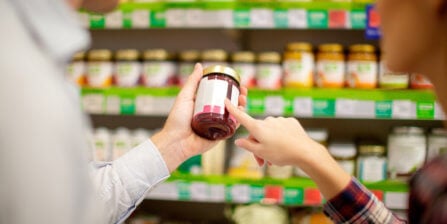 How To Read Food Labels: Guide to Nutrition Labels
How To Read Food Labels: Guide to Nutrition Labels 

